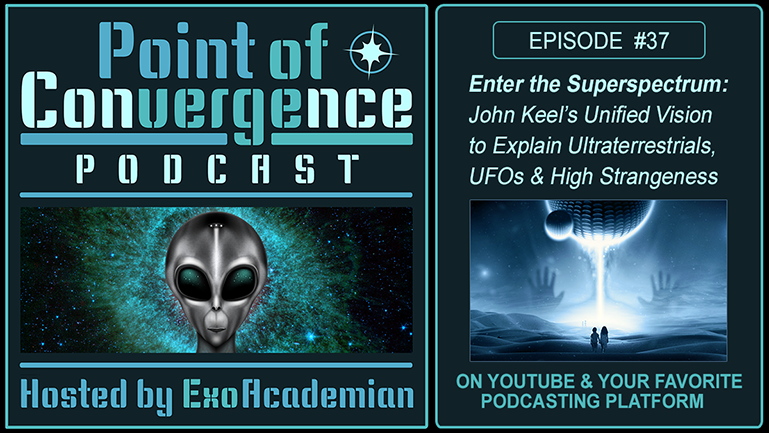Listen by joining @ patreon.com/exoacademian
When it comes to the history of the UFO Phenomenon, there are a few key players who have shaped the nature of the conversation. Of those individuals, those considered – at least initially, anyway – the most controversial, are the ones who suggested an alternative to the popular, and in many ways ubiquitous, extraterrestrial hypothesis: the notion that alien species had traveled to us by traversing vast distances of interstellar space.
That initial controversy fell by the wayside, in many ways, as evidence mounted over the decades suggesting the ETH really was either, if not wrong, then woefully incomplete, in terms of explaining the depth and breadth of the UFO Phenomenon; a phenomenon that seemed, upon closer inspection, to have much in common with tales of encounters with otherworldly entities from distant human lore.
Of course, Jacques Vallee stands out as perhaps the most influential in this regard. But standing right alongside him, in terms of positing an alternate origin hypothesis to explain the apparently non-human entities visiting and interacting with us throughout recorded history, is the figure of John Keel. Keel, ever a trailblazer, sought from the outset to study this subject in an objective way, unprejudiced by the prominent theories of his day.
And as he studied this subject in depth, Keel began to notice peculiar – though, to him, unmistakable – commonalities behind the appearance and behavior of phenomena such as UFOs and alien beings, and tales from occult literature going back deep into the depth of recorded human history. The crossover elements were so overwhelming in scope, in fact, that this recognition ultimately led Keel to conclude that a common origin was responsible for all interactions with supposedly otherworldly entities – whether they be supposed aliens from distant planets, or goblins arising from the underworld.
Keel suggested that these beings were not so much distant travelers from elsewhere in the fabric of our own spacetime, as interdimensional sojourners, emerging from some alternate plane that exists right alongside our own. He termed this vast “otherplace”, the superspectrum. And he termed the visitors coming from this parallel plane the “ultraterrestrials”.
Keel believed – even though that term “belief” was loathsome to him in many ways – that the vastly different entities we’ve experienced over time, including the craft supposedly traversing our skies, were all manifestations arising from this alternate plane of existence. Indeed he even wondered if perhaps one central and decidedly superior intelligence was responsible for all of these manifestations; manifestations that influenced the origins of our ancient religions as well as much more recent fields of interest and inquiry, such as the UFO Phenomenon.
What was the historical evidence, and direct personal experience, that led Keel in this peculiar – and, at first glance, perhaps counterintuitive – direction? These are the very matters we’ll seek to engage with, in this, the 37th episode of the Point of Convergence podcast.


 036 ~ Transformed by Contact
036 ~ Transformed by Contact